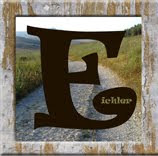A blog is defined as "A web site containing the writer's or group of writers' own experiences, Observations, opinions, etc., and often having images and links to other web sites". (reference - http://dictionary.reference.com/browse/Blog)
Another way to use a blog in the classroom is through journaling. Journaling may be applied to all classroom environment. For example, in the math classroom students could be required to blog 3 days a week. They may pick any 3 days they choose. Students could write about what they learned, how they can apply what they learned, and ask questions of others. Students could also be required to read 2 blog entries and make an intelligent comment about what they read or answer another students questions. Another quick blog assignment for the math classroom could be for students learning shapes. Students take pictures of shapes in nature and post those to their blog with a description and definition of the shape.
Blogs are an excellent resource for any learning environment. Blogs are an outstanding way for instructors to assess learning and have students share their opinions and ideas. Students can access blogs in the classroom, from home, from their phones, and anywhere else there is an internet connection. They can be used in any classroom for any assignment. By blogging students are free to express their complete ideas in a safe non-judgmental setting.
One way to use a blog in the classroom is as a discussion board. Teachers can provide questions to student that create critical thinking. Instead of asking yes/no questions, ask students open ended questions, answers that they must defend using vocabulary related to the lesson. For example, using the classroom blog, a science teacher may provide a picture of a tree with branches mainly located on one side and have the students explain why they think this is happening. The following are other examples of open ended questions:
o In your own words, describe an atom.
o If you were an element, what kind of element would you be and why? Describe the element.
Another way to use a blog in the classroom is through journaling. Journaling may be applied to all classroom environment. For example, in the math classroom students could be required to blog 3 days a week. They may pick any 3 days they choose. Students could write about what they learned, how they can apply what they learned, and ask questions of others. Students could also be required to read 2 blog entries and make an intelligent comment about what they read or answer another students questions. Another quick blog assignment for the math classroom could be for students learning shapes. Students take pictures of shapes in nature and post those to their blog with a description and definition of the shape.
Literature and history are natural fits for blogging as well. Students are assigned to read a chapter then they make inferences and discuss what might happen next. Students may also use a blog to express ideas and solutions to the problems being experienced in the reading. In the history classroom, students use blogs to discuss political events or to discuss solutions to world issues.
There are many resources on the Internet for free blogs. I have tried several. The best one I have found that works for my classroom environment is kidblog.org. Kidblog is easy to use and you can quickly create users for your classroom without e-mail addresses for the students. Blogging is an excellent resource for developing free thinkers and to help develop a deeper knowledge of any subject.
These are just a few ideas for blogging in the classroom. If you have questions or need instructions for creating users with kidblog.org, leave a comment in the comment section and I will post instructions.

Comments
Post a Comment